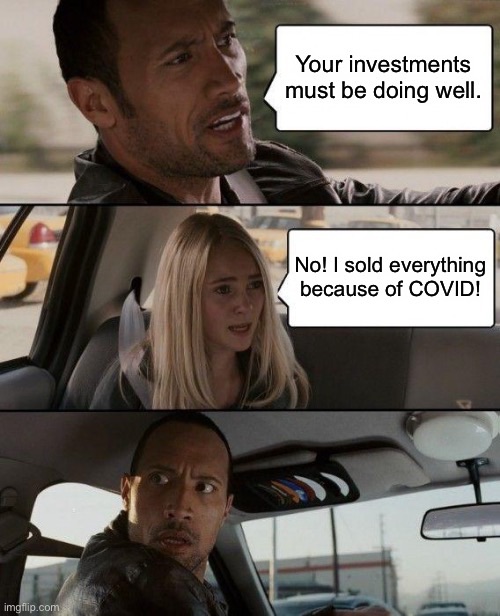The S&P 500 hit an all-time high this week, a stunning development in the face of the COVID-19 pandemic and related economic impacts.
All of the De Novo Capital accounts I manage hit all-time highs a month ago and have continued higher since.
How did this happen?
I will not try to explain here why the market ripped to new highs, although I have my theories. Instead, below is what I wrote to clients in mid-April after stocks had their worst quarter in over a decade. The market had bottomed a few weeks earlier, although we had no idea at the time, just as we have no idea whether the market will go higher or lower from here.
The bottom line: Have a strategy that can survive volatility, and stick to it. Do not try to predict short-term market direction.
Most importantly, don’t panic in a crisis. Stick with your plan.
While I do not know what will happen next, we will stick with our plan, including investing in companies that can survive short term problems in the economy.
Here is my note from April 15:
Managing Risk Through the Crisis
Market volatility and drawdowns, whether caused by normal economic cycle or panic, are a part of investing and are why stock investors earn outsized returns relative to less volatile options. As long-term investors, we cannot avoid a drawdown unless we want to make bets about market direction which require not only deciding when to get out, but when to get back in, a difficult task that no investor can perform consistently. Thus, our job is to manage the risk through the crisis.
At times such as these, investors should focus less on the inevitable volatility and instead focus on preventing a permanent loss of capital. To do this, we must avoid needing to sell (time horizon), avoid wanting to sell (risk tolerance), and avoid permanent impairments to the fundamental value of our investments (security selection). All of these work together.
First and foremost, we must focus on our time horizon to ensure we do not need to sell in the middle of a drawdown. Money for short term needs should not be in stocks, because as much as this whole situation is novel, a decline of 20% or more in stocks is not unusual. Since 1928, this has occurred on average every 4-5 years. Temporary volatility can lead to permanent losses if investors are forced to sell at a low point because they need the funds.
Next, we must understand our own risk tolerance so that volatility does not break our will to continue holding, causing us to sell at the lows. Stocks do not go up in a straight line even if we experience periods where they do exactly that. We must accept short-term volatility and unpredictability in our portfolios if we want the long-term returns available to stocks. If we are investing for the long term, we must think long term.
Finally, we must consider security selection and ensure we have invested in companies with the durability to survive a sharp and deep recession. Investors should invest in robust companies with strong balance sheets and the liquidity and resources to survive short term problems in the economy. A company cannot get to the long term if they cannot survive the short term. Looking forward, the crisis also brings opportunity for strong companies to thrive in the aftermath as weaker competitors may not recover.
Putting this together, if we choose investments in companies strong enough to survive the crisis, we can tolerate the short-term volatility and keep our focus on our long-term investing goals. This is not a new focus for us. During the short-lived sell-off at the end of 2018 I said that we seek to own “high-quality companies that should perform well in a rebound but, more importantly, give us greater confidence in holding through further decline.” This is how we have positioned the portfolio going into this crisis, and I continue to evaluate each holding as the crisis develops.
We did have cash in the portfolio as the sell-off started and have put much of that to work, as discussed below. As we make purchases, our focus will be not on price movements but on value – whether the price represents a good long-term purchase for this company, regardless of what the stock does in the near term.
During this period, investors must keep in mind one unequivocal truth: you are not going to call the bottom. The market bottoms when investors are most pessimistic and selling reaches its peak, but this is only clear in hindsight. By the time news and fundamentals start to improve and investors are optimistic again, the stock market will already have bottomed and will be on its way to recovery.
DISCLAIMER: Past performance is not a guarantee of future results. Investing involves risks and may result in the loss of some or all of the principal invested. Before investing, you should consider your investment objectives and the costs and risks.
